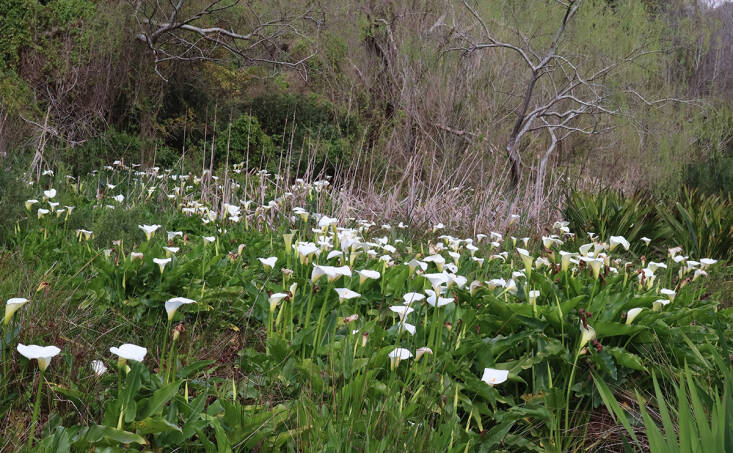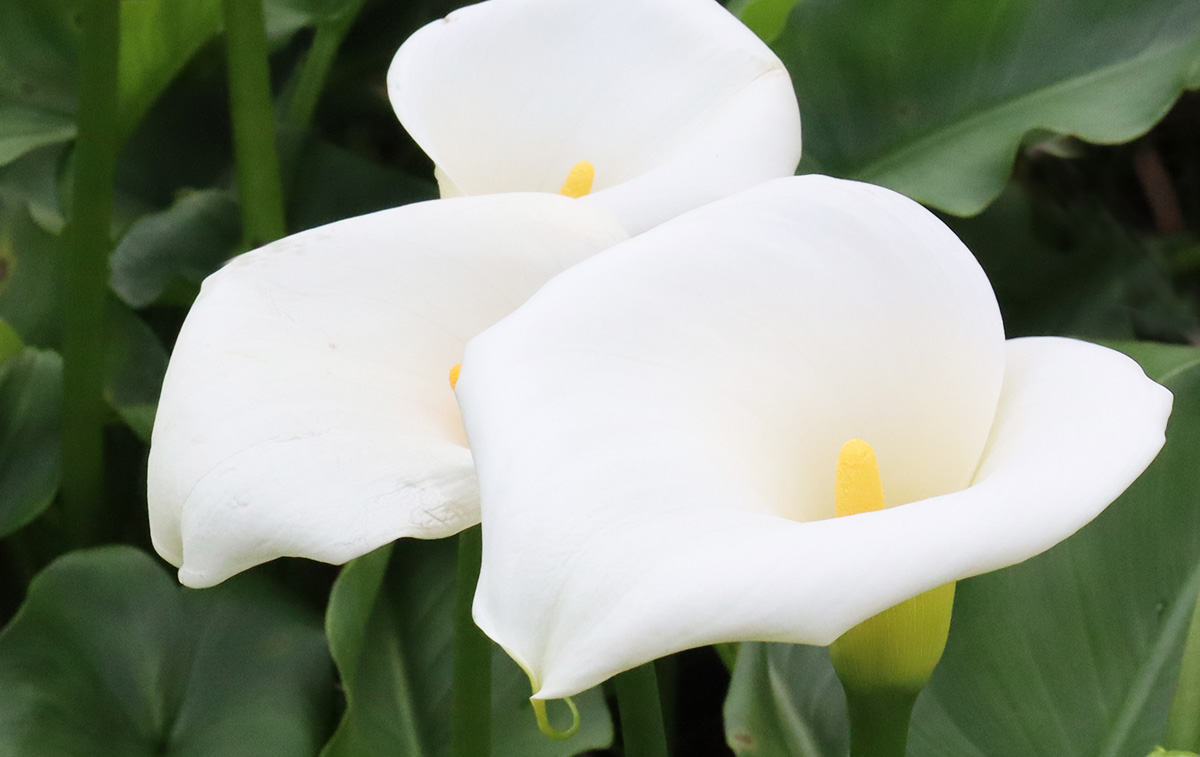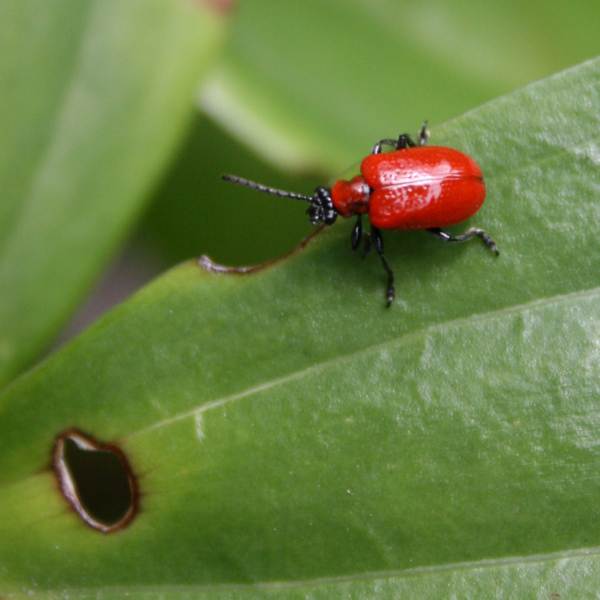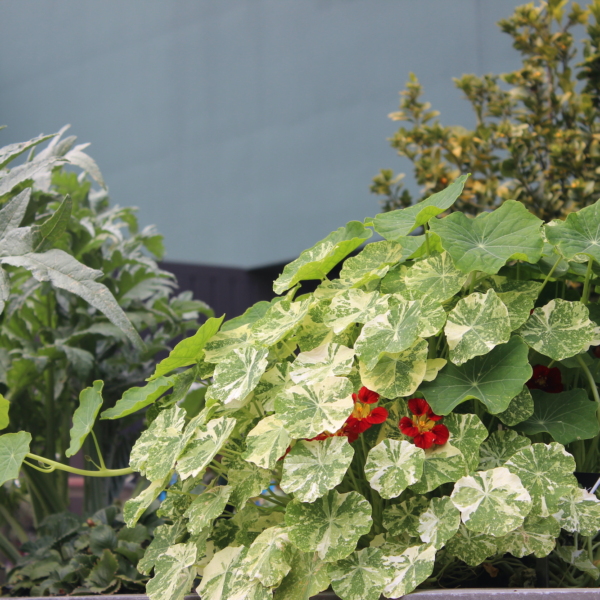South Africa’s native arum lilies are known as calla lilies in the United States, where they are an expensive cut flower and a garden ornamental. But in their homeland, in the Southern Hemisphere’s winter and spring, it is possible to wallow in them, for free. In late August, at the end of an exceptionally wet Cape Town winter, the wallowing is literal: Mud and water are not in short supply.
And arum lilies are everywhere.
Photography by Marie Viljoen.
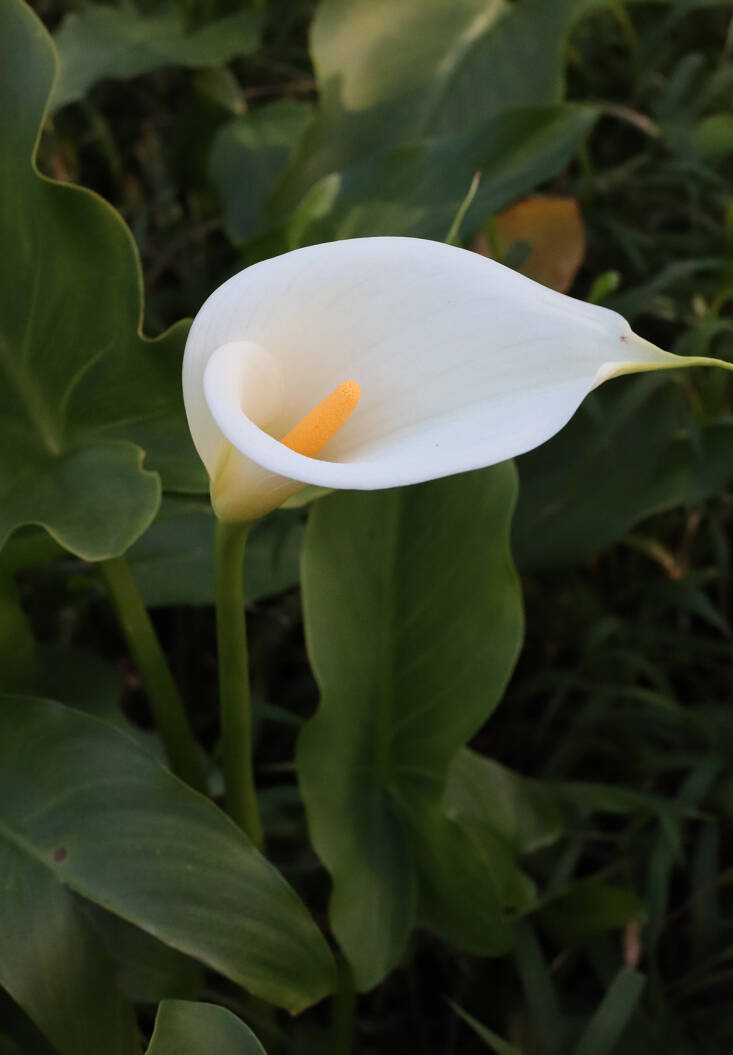
This September, the city is five years out from its history-making drought. Day Zero—a doomsday-like countdown to the end of Cape Town’s water supply—loomed. Now, as cold fronts from the southern Atlantic arrive in sheets of rain and wind at the southern tip of Africa, water is abundant. Growing in, or near, seasonal streams and marshes, are arum lilies, like flocks of long-necked white water birds visiting the wetlands that burgeon as the rain of months accumulates before seeping into the Table Mountain Group aquifer, or running out to sea.
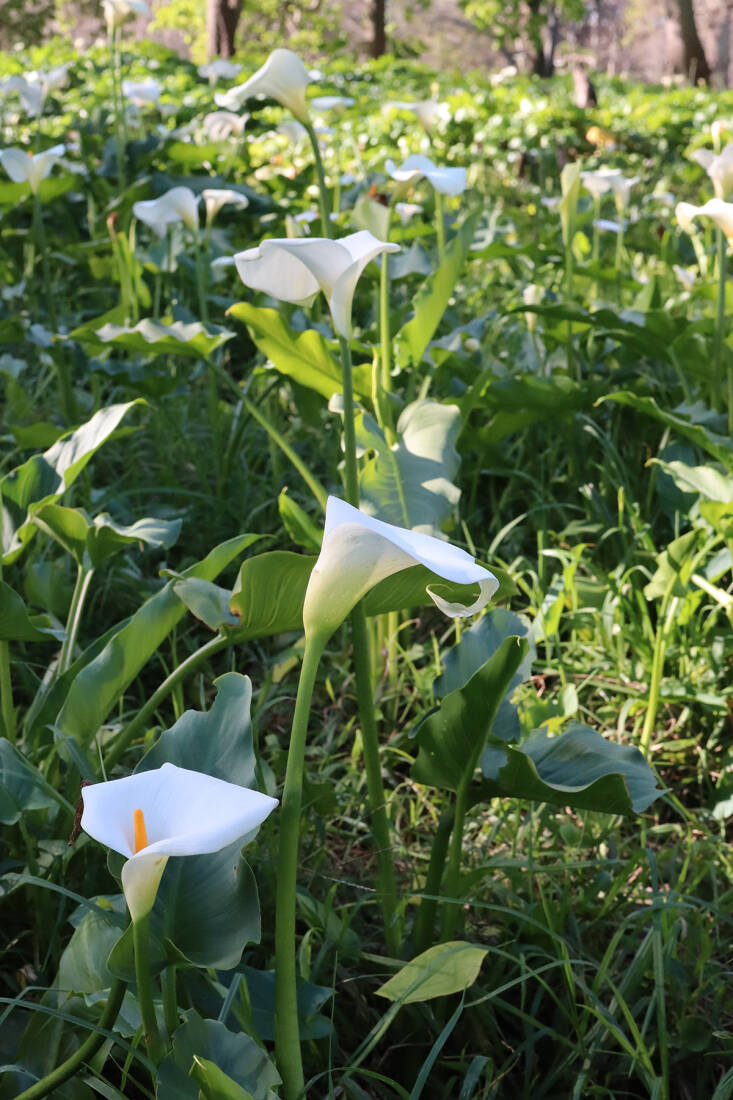
The common white arum is Zantedeschia aethiopica, one of eight Zantedeschia species. In South Africa it is not confined to winter rainfall regions like the Western Cape Province, but grows happily in colder, drier climates, as long as plentiful summer rain feeds the plants after they break winter dormancy.
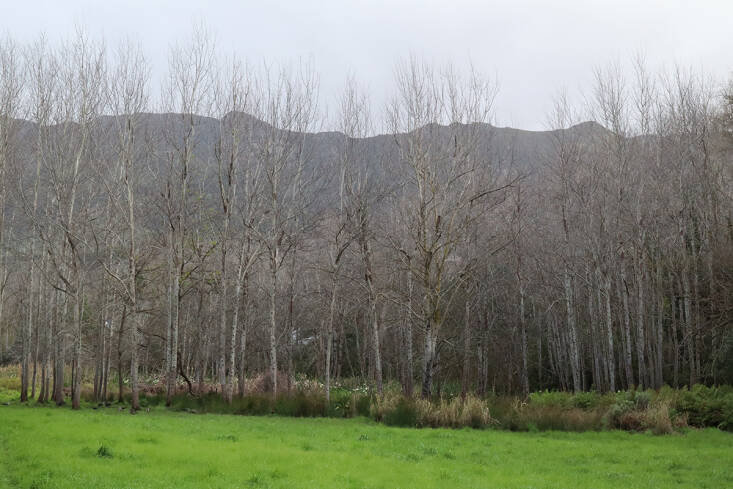
For American gardeners interested in growing them, arums (callas, if you prefer) are hardy to USDA zone 8, at least. In Southern California, and especially in New Zealand and Western Australia (where they were banned for sale in 2006), they have become invasive.
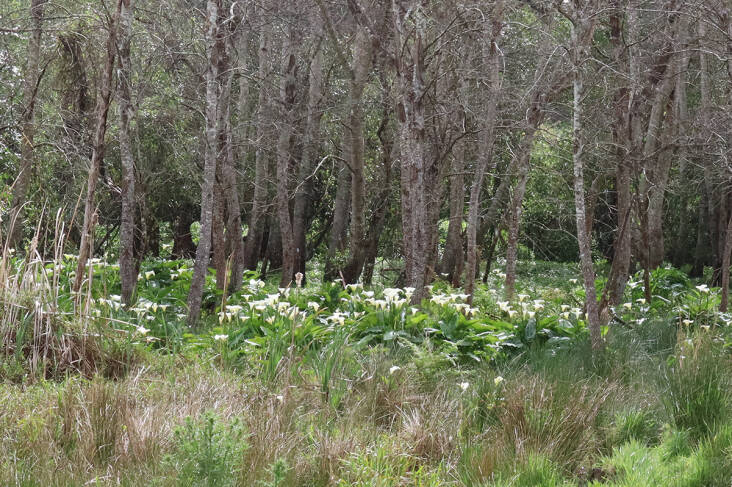
Spring in South Africa is usually associated with the magical, ephemeral eruption of wildflower carpets along the summer-dry West Coast and semi-desert hinterland of the Northern Cape Province. But it’s worth noticing and appreciating the sumptuous presence of ubiquitous arums before their natural wetland habitats are lost to development in their native range.
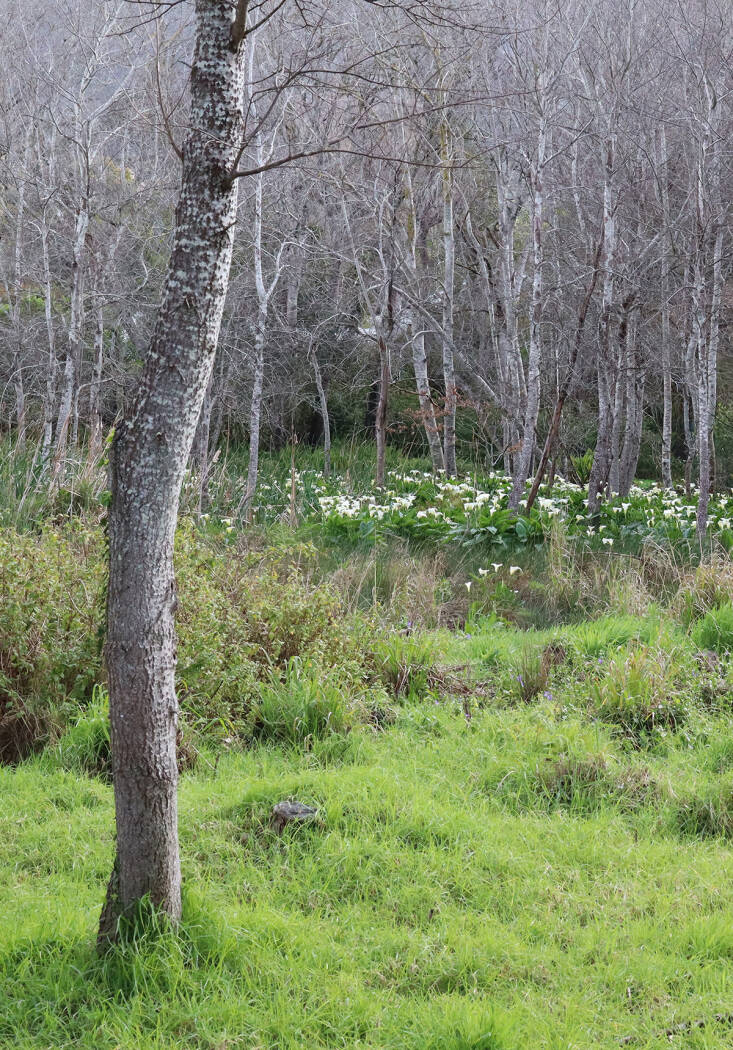
Cooked young arum leaves, stems, and tubers were a traditional food in parts of South Africa. Wild colonies (as well as garden-grown arums) are relished by porcupines, who skip the cooking part and devour the tubers raw. Raw, the plant can be mildly toxic to humans (as I can attest: On a teenage dare, I ate an entire yellow spadix of an arum lily. My tongue reacted by swelling up. The cause? Raphides: The needle-shaped crystals of calcium oxalate. I survived).
